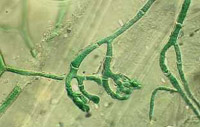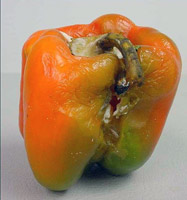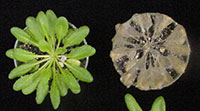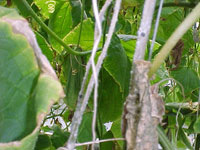Infection
S. sclerotiorum is a polyphagous, necrotrophic plant pathogen with a reported host range of greater than 400 plant species. It does not exhibit “gene-for-gene’ specificity in its interactions with hosts and is therefore difficult to control by breeding for crop resistance. It is cosmopolitan, occurring wherever susceptible crops are grown. In the United States it can be particularly devastating to sunflower, dry beans, canola, and lettuce production. New infections generally occur during the period of canopy closure and flowering. A few crops, e.g., sunflower and lettuce, reportedly can be infected by hyphae arising directly from sclerotia, but in these and in most other crops the primary source of new infections comes from ascospores. Unlike ascospores and conidiaspores of many other fungi ascospores of Sclerotinia can not directly infect its host. The fungus most first grow saprophytically before it is able to penetrate healthy plant tissues.
Updated 15 December 2009 by Jeffrey Rollins.
Videos
Quicktime 7 66KB
Tomato Leaflet Infection
Pictures
Commenting is closed for this article.



